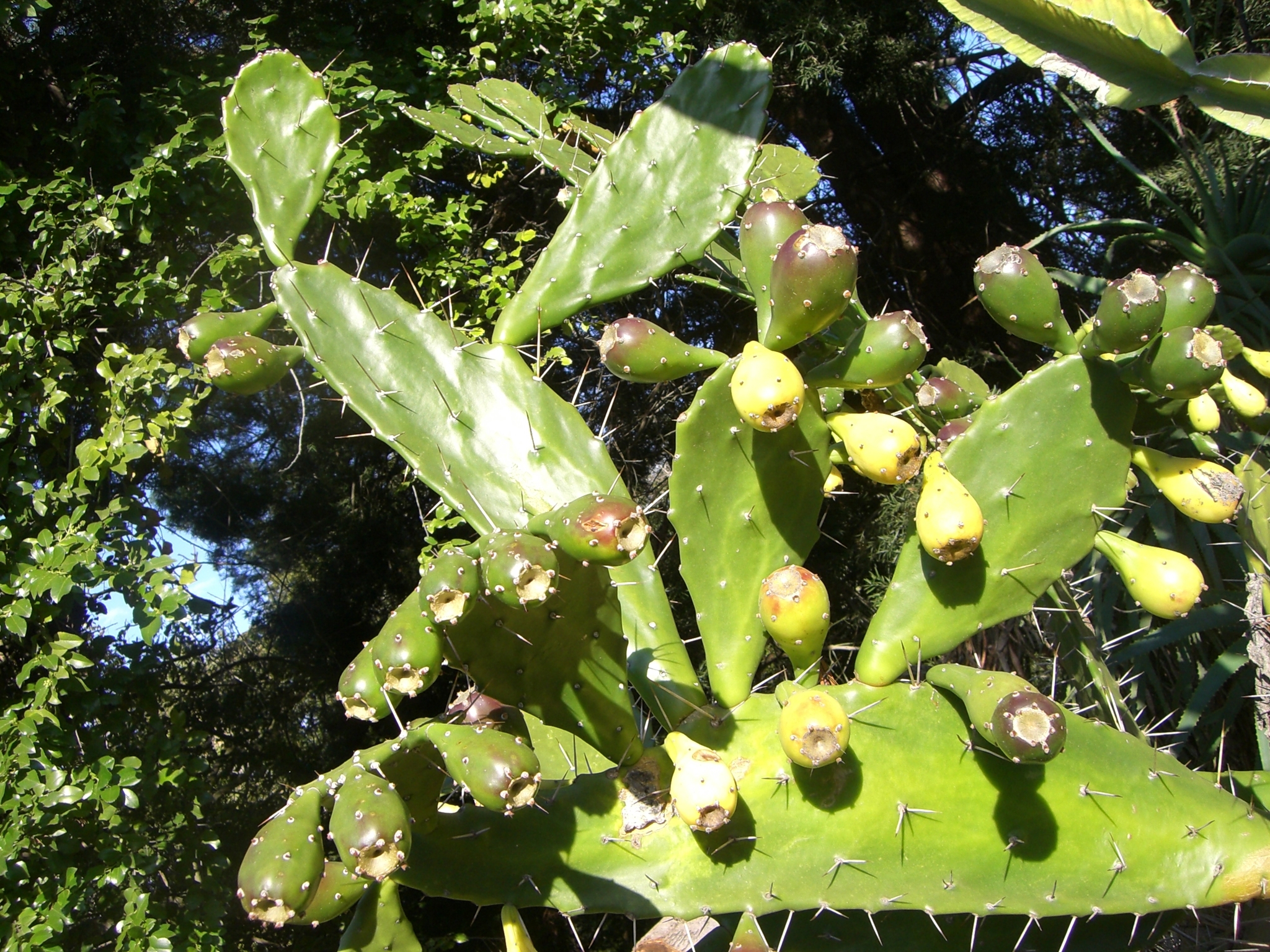
Named after the Greek town Opus where plants may have been naturalised or cultivated.
Shrubs or small trees. Stems jointed to form segments, succulent, flattened to cylindrical, club-shaped or almost spherical, rarely ribbed. Areoles with glochids and often prominent on raised tubercles, spines (0)1-many. Leaves mostly small, terete and soon shed. Flowers solitary and without a tube, mostly lateral to almost terminal, rarely terminal; mostly late spring and summer. Pericarpel with leaves, glochids and often spines. Stamens numerous sometimes moving when touched. Ovary inferior. Fruit fleshy or dry, mostly ovoid with indentation at the tip.
Special care is needed with this genus as the fine hooked spines in glochids can persist in the skin and cause unpleasant irritation. The cultivation of this genus in Australia as ornamental plants, sometimes as hedges, has led to widespread naturalisation; as many as 27 species may be involved. Some severe infestations have been alleviated by biological control by the larvae of Cactoblastis and other moths as well as chemicals. The common ornamental species are dealt with here; naturalised species are treated in the Flora of Australia, vol. 4.
Opuntia aurantiaca is proclaimed in Tasmania while in Victoria O. robusta, O. stricta and O. vulgaris are noxious weeds. In other states all members of the genus are proclaimed with the exception of O. ficus-indica in NSW and Qld where it is cultivated commercially for its edible fruit and not regarded as especially weedy.
The following 3 species have cylindrical tubercled stems. O. cylindrica (Lam.) DC., occasionally encountered in old gardens, is a long, cylindrical, tubercled species with small cylindrical leaves 1-1.5 cm long towards the tip. O. imbricata (Haw.) DC. from Mexico and SW North America has strongly tubercled stems which have spines covered with a papery sheath. O. versicolor Engelm. from Arizona and New Mexico has reddish brown areales and glochids.
Presence of small, cylindrical leaves and glochids.
A genus of 200 or more species widespread through the Americas where cacti occur.
Benson (1982), Crook & Mottram (1995).
Only the more commonly grown species are included in the key; others are occasionally available.
Source: (1997). Cactaceae. In: . Horticultural Flora of South-eastern Australia. Volume 2. Flowering plants. Dicotyledons. Part 1. The identification of garden and cultivated plants. University of New South Wales Press.
